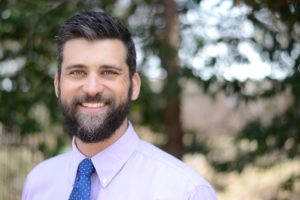
Fostering a Learning Community in a Digital World
By this time in a semester, the ebbs and flows of a well-designed and well-facilitated class would, in normal circumstances, have allowed a community of scholars to flourish. These learning communities help promote critical dialogue with academic peers and help to foster a pluralism of varied perspectives that ultimately serves to elevate the collective outcomes. But what if this process is arrested before this can be achieved? The on-going pandemic has created a reality unlike anything we’ve seen, but, as educators, it is incumbent upon us to ensure that these features can continue to persist.
Synchronous virtual instruction (Zoom, Google Meet, Webex, etc.) aims to take the place of the in-person component of our traditional means of teaching. While there is a distinct pleasure in being able to ‘meet’ as a class, the interpersonal conversations are limited and real connections are more challenging to create. In my experience, one reason for this is that virtual sessions are planned to be delivered in an online reality and not as a virtual representation of a normal reality. The best virtual session I ever planned with my students happened by accident because I did not plan it to be virtual. A sick baby necessitated an in-person session becoming virtual, so I adjusted my completed (in-person) plans to fit a virtual lesson setting instead. Findings from this fortuitous accident--shared below--have helped frame how my fellow faculty and I view online instructional delivery.
In the scope of my normal lesson planning structure, I generally aim to promote engagement and discussion via a variety of activities that tend to be relatively short in length (~20-30 minutes). To accomplish this within a Zoom, I plan for small bits of synchronous time balanced against asynchronous tasks and breakout rooms to encourage engagement and to ensure that sessions are not rote or boring. By sharing the time amongst different components, lessons become more natural, and the time goes by quickly.
Another hallmark of my instructional planning approach is that I strive to offer students opportunities to engage with one another around critical issues and to leverage their budding expertise to share their thinking with their peers. To translate this to a virtual environment, I rely heavily on Google Slides to build a mechanism whereby students can collaborate and engage with one another. For instance, to replicate a gallery walk or anchor chart presentation, I design a template slide for each group that gives students instructions and frames their work. From there, I share this document with each student and change the sharing privileges to “anyone with the link can edit.” This document then functions as a collaborative space for groups of students to work together on a task that they can then share with their peers. To broaden the social/connection aspects of this activity, I utilize the Breakout room feature in Zoom to assign students to random groups.
A final area of focus when thinking about delivering instruction in a virtual way is to fashion opportunities for students to engage with one another on a more personal level. To help with this, I open and close with do now exercises and exit tickets that have less to do with the explicit content of the session, and more to do with promoting the well-being and engagement of students instead. While we always want to maximize the amount of time that students are exposed to instruction, in the unique environment of a Zoom, taking some time for these kinds of activities pay off.
When all is said and done, our duty as educators requires us to do what we can to help lead our learners towards achieving their potential. As we continue to learn more about how best to work with our students in these uncertain times, a great first step is to think through planning and delivery using this lens:
- Plan as though you are delivering your lesson to a full class of students,
- Incorporate virtual techniques to approximate in-person experiences, and
- Allow yourself (and your students!) grace to spend time with each other and to value the benefit of social interaction.
While learning will continue for many, for some, this transition to a virtual classroom will be crippling. Recreating a learning community in a virtual setting will help those students reestablish connection with their peers and their professors, and hopefully offer an avenue for all to reach higher levels of achievement.
Very well written. Nick we are so proud of you and all that you have accomplished. Love you so much. Dad & Mom